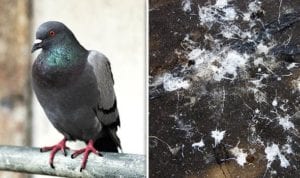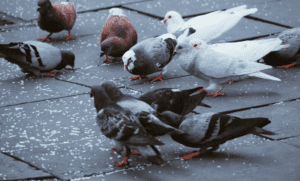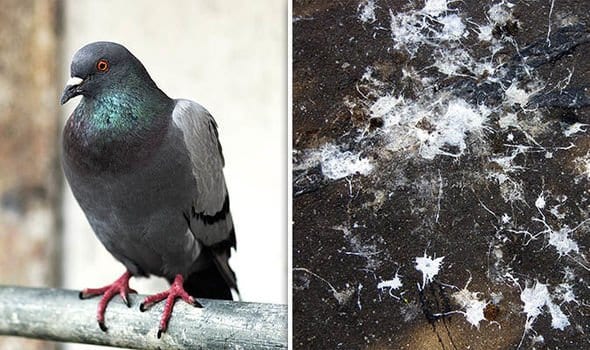
by Pigeon Patrol | Mar 23, 2023 | Bird Spike, Pigeon Predators, Pigeon Spikes, Pigeons, Pigeons in the News, Raccoons, Sparrows, UltraSonic Bird Control
Among the most famous images of London’s Trafalgar Square is one of people feeding pigeons in its grounds. And closer to home, feeding these birds was a favourite pastime on the weekends around the Vidhana Soudha, when people flocked to it for a bit of relaxation in its gardens. But no more, as the pigeons are now as numerous in most parts of the city as they were once around it.
Far from feeding them, people have now taken to shooing them away as they invade their balconies and kitchens, building nests and dirtying them with their poop and feathers. Their numbers have become their downfall as they are no longer priced as pets either. Instead they are the flying rats of urban Bengaluru.
Observes one fed up Bengalurean, industrialist, Narendra Kumar, “Pigeons have adapted so well to our urban civilisation that they are driving other birds away. Cleaning pigeon droppings has become a huge problem today. People in high- rise buildings are the worst affected and even the plants on the balconies suffer as a result of their invasion.”
But what’s worse, the pigeon droppings are not just an eyesore, but also a health hazard, warn wildlife experts. With the pigeon population growing, they have been spreading diseases like avian influenza and castle fever through their droppings, according to them. “ The pigeon droppings contain bacteria and fungus, which can cause major lung disorders that can be fatal,” they explain.
It is also claimed that those who fall sick as a result of the pigeon droppings, find recovery hard despite downing antibiotics, because of the strong infection they transmit. Bird lovers too admit to being on their guard when it comes to these birds because of the infections and diseases they transmit.
The BBMP , which has received numerous complaints from people about the pigeon menace, is now planning to hold a meeting with wildlife experts, bird lovers , health experts and concerned citizens to deal with it, says Mr Sarfaraz Khan, BBMP joint commissioner (health).
The civic agency is reportedly considering taking a cue from other countries, which have effectively dealt with the growing population of pigeons without harming the ecology and is also planning a study on their impact on humans, animals and other bird species.
Source
Pigeon Patrol Products & Services is the leading manufacturer and distributor or bird deterrent (control) products in Canada. Pigeon Patrol products have solved pest bird problems in industrial, commercial, and residential settings since 2000, by using safe and humane bird
deterrents with only bird and animal friendly solutions. At Pigeon Patrol, we manufacture and offer a variety of bird deterrents, ranging from Ultra-flex Bird Spikes with UV protection, Bird Netting, 4-S Bird Gel and the best Ultrasonic and audible sound devices on the market today.
Voted Best Canadian wholesaler for Bird Deterrent products ten years in a row.
Contact us at 1 877-4-NO-BIRD,(604) 585-9279 or visit our website at www.pigeonpatrol.ca
Pigeon/Pigeon Patrol / Pigeons Roosing / Vancouver Pigeon Control / Bird Spikes / Bird Control / Bird Deterrent / PIgeon Deterrent / Surrey Pigeon Control / Pest / Seagull deterrent / Vancouver Pigeon Blog / Birds Inside Home / Pigeons in the cities / Ice Pigeons / What to do about pigeons / sparrows, Damage by Sparrows, How to Keep Raccoons Away, Why Are Raccoons Considered Pests / De-fence / Pigeon Nesting / Bird Droppings / Pigeon Dropping / woodpecker control / Professional Bird Control Company / Keep The Birds Away / Birds/rats/seagull/pigeon/woodpecker/dove/sparrow/pidgeon control/pidgeon problem/pidgeon control/flying rats/pigeon problems/ bird netting/bird gel/bird spray/bird nails/bird guard
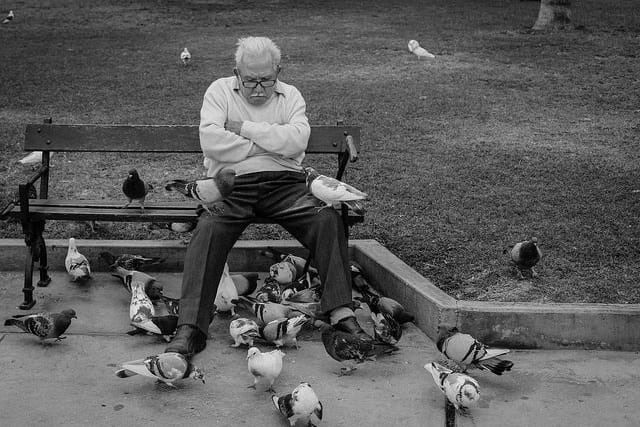
by Pigeon Patrol | Mar 23, 2023 | Columbidae, Doves, history of pigeons, MBCA, pet bird, Pigeon Control
Pigeons may seem harmless, but these pest birds cause millions of dollars in damage every year to buildings, ventilation systems, machinery, statues, roofs, and much more. Bird droppings and nesting materials left by pigeons pose physical problems and health hazards that can become very serious if not corrected quickly making prompt and effective professional bird control is often essential.
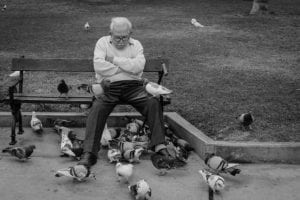
Potential Health Hazards:
There are many health risks associated with pigeons and their droppings. The bacteria, fungi, and ectoparasites that they and their droppings harbor are numerous. The four most common ways disease is passed by bird to human are: inhalation of fecal dust, food and water contaminated with bird feces, direct contact with feces, and parasitic transfer.
Pigeon droppings can expose humans to many diseases, including salmonella, Newcastle disease, candidiasis, encephalitis, orthosis, and toxoplasmosis. In addition, they can also carry cryptococcosis, and coccidiodomycosis, which cause meningitis. The droppings may also harbor growth of fungus, which causes histoplasmosis. Fleas, lice, mites, and other pests often live on these birds, hitching a ride to where ever they want to jump off. Pigeons may also attract other pests, such as rats, which feed on dead pigeons and food that well-intentioned bird lovers may scatter for them.
In addition to disease, bird droppings are known for triggering people to slip and fall, which makes it especially important to rid the birds from highly trafficked areas.
Damage Caused by Pigeons:
These are messy birds, leaving droppings everywhere they go, particularly near their roost sites. Pigeon droppings are not just gross, they are also full of uric acid which makes them extremely corrosive. The droppings are the direct cause of millions of dollars in damage to buildings and other structures. Particularly vulnerable are painted surfaces, awnings, signs, and other similar surfaces. A tragic example of the corrosiveness of pigeon droppings is the Minnesota bridge accident in 2007, which was found to be the direct result of bird droppings eating away at the metal bridge supports until they weakened.
In addition to the damage cause by their acidic droppings, pigeon nests can also cause damage. Pest birds will often build nests in gutters or on roof corners blocking essential drainage systems. Every year several warehouses experience roof damage, and even collapse, when drainage systems have been blocked and standing water rises just six inches. Bird nests can also block ventilation systems, which not only prevents exhaust of potentially harmful gases, but also has the potential to spread diseases. Fire is also a potential hazard. Nesting materials are usually flammable, consisting of twigs, straw, grasses and dried droppings. When pest birds build their nests inside electric signs or other machinery there is a great risk of fire.
Pigeons are creatures of habit and highly social. Once they have found a cozy spot the will return again and again, bringing along more of their pigeon pals. Prolific breeders, pigeons can hatch several broods a year, sometimes even laying a new clutch before the previous have even hatched. Often our buildings and structures have architectural features such as drain spouts and eaves that make perfect nesting spots for these birds. Pigeons are comfortable around humans and they’re hard to scare away or deter. Once a flock of stubborn unwanted pigeons have set up shop in/on your building, it can be stubbornly resistant to removal, often requiring the services of a pest control or animal control professional. As is true of many pests that invade our homes and businesses, the first step to controlling feral pigeons is to remove their food source.
Tips to deter pigeons:
- Don’t feed the pigeons.
- Screen drains and gutters to make your property less attractive to pigeons.
- Encourage children to pick up spilled food – and teach them NOT to feed pigeons
- Keep areas around trash bins and outdoor dining areas clean
- Eliminate water sources such as bird baths, over-watered lawns, or kiddy pools.
Source
Pigeon Patrol Products & Services is the leading manufacturer and distributor or bird deterrent (control) products in Canada. Pigeon Patrol products have solved pest bird problems in industrial, commercial, and residential settings since 2000, by using safe and humane bird
deterrents with only bird and animal friendly solutions. At Pigeon Patrol, we manufacture and offer a variety of bird deterrents, ranging from Ultra-flex Bird Spikes with UV protection, Bird Netting, 4-S Bird Gel and the best Ultrasonic and audible sound devices on the market today.
Voted Best Canadian wholesaler for Bird Deterrent products ten years in a row.
Contact us at 1 877-4-NO-BIRD,(604) 585-9279 or visit our website at www.pigeonpatrol.ca
Pigeon/Pigeon Patrol / Pigeons Roosing / Vancouver Pigeon Control / Bird Spikes / Bird Control / Bird Deterrent / PIgeon Deterrent / Surrey Pigeon Control / Pest / Seagull deterrent / Vancouver Pigeon Blog / Birds Inside Home / Pigeons in the cities / Ice Pigeons / What to do about pigeons / sparrows, Damage by Sparrows, How to Keep Raccoons Away, Why Are Raccoons Considered Pests / De-fence / Pigeon Nesting / Bird Droppings / Pigeon Dropping / woodpecker control / Professional Bird Control Company / Keep The Birds Away / Birds/rats/seagull/pigeon/woodpecker/dove/sparrow/pidgeon control/pidgeon problem/pidgeon control/flying rats/pigeon problems/ bird netting/bird gel/bird spray/bird nails/bird guard
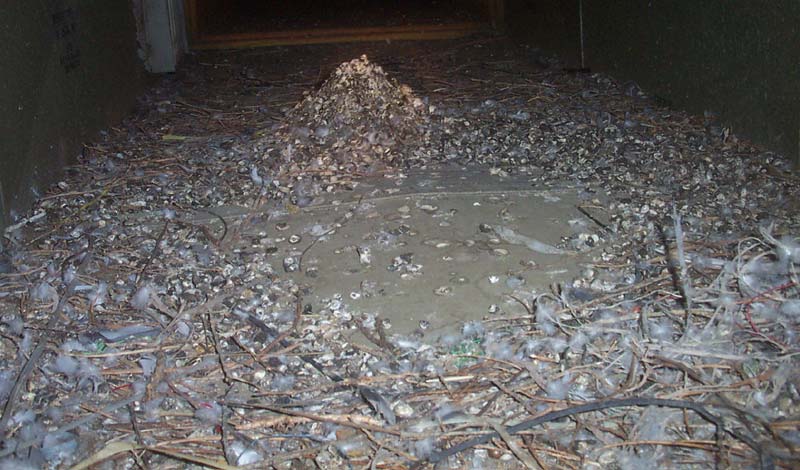
by Pigeon Patrol | Mar 23, 2023 | Bird Spike, Pigeon Predators, Pigeon Spikes, Pigeons, Pigeons in the News, Raccoons, Sparrows, UltraSonic Bird Control
Pigeons are highly social animals and are incredibly smart creatures. But did you know pigeons carry many diseases and parasites linked to their droppings? When pigeons start roosting on your property, they will rapidly create a vast mess with their poop. Not only are pigeon droppings in your home disgusting, but they can carry major risks to your wellbeing and can cause havoc on your property. However, the danger varies depending on the invasion. If you have a pigeon invasion on your property, there is a huge risk of your family members contracting illnesses from their droppings. Histoplasmosis, Candidiasis, Cryptococcosis, Psittacosis, Encephalitis, and Salmonellosis are some of the deadly diseases spread through pigeon droppings. The safe bet is to handle your pigeon invasion quickly by calling a professional pest control company to eradicate any risk of disease.
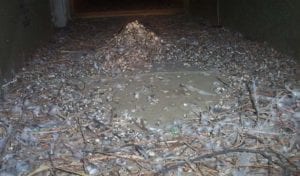
In addition to the disease and infection, pigeons can also carry parasites, ticks, and mites. A dead pigeon is more of a breeding ground for flies and pests. We at Accurate Pest Control believe, the more established the pigeon infestation, the more significant danger of having these pests getting into your property.
How hazardous are Pigeon droppings?
- When an individual breaths dust or water droplets of contaminated bird droppings, it can cause several diseases, including aflu-like illness known as Psittacosis.
- Salmonella is a bacterial virus that can cause Diarrhea. Pigeons with this type of bacteria can spread it through their droppings.
- One must take safety measures when they are cleaning up or come in contact with pigeon droppings. Make sure to rinse your hands and clean any bare skin before eating, drinking, or placing your hands near your mouth. Similarly, if you are feeding or handling birds, wash your hands afterwards.
- Individuals with a compromised immune system, like HIV/AIDS or cancer, must avoid cleaning the droppings as it can be fatal.
How can you catch it?
- Anyone can become affected if he/she breathes it in. The infant who died at the hospital in Glasgow, Scotland, had been exposed to the fungus. Experts reveal the apparent source has been traced to a room on the rooftop of the hospital.
- Bird feces and feathers can disturb your home’s heating and cooling modules and indoor air quality.
- Pigeon droppings contaminated with bacteria or viruses are often left on the windowsills and cars to dry out.
The best thing you can do to get rid of your pigeon problem is to call licensed pest control in San Antonio, Texas. Our Wildlife animal control in San Antonio uses proper techniques to keep your home or business free from unwanted critters and ensure that these creatures are removed safely. To improve the situation, you must ensure all areas are properly cleaned, and preventive measures are taken to stop the birds from invading your home/property.
Source
Pigeon Patrol Products & Services is the leading manufacturer and distributor or bird deterrent (control) products in Canada. Pigeon Patrol products have solved pest bird problems in industrial, commercial, and residential settings since 2000, by using safe and humane bird
deterrents with only bird and animal friendly solutions. At Pigeon Patrol, we manufacture and offer a variety of bird deterrents, ranging from Ultra-flex Bird Spikes with UV protection, Bird Netting, 4-S Bird Gel and the best Ultrasonic and audible sound devices on the market today.
Voted Best Canadian wholesaler for Bird Deterrent products ten years in a row.
Contact us at 1 877-4-NO-BIRD,(604) 585-9279 or visit our website at www.pigeonpatrol.ca
Pigeon/Pigeon Patrol / Pigeons Roosing / Vancouver Pigeon Control / Bird Spikes / Bird Control / Bird Deterrent / PIgeon Deterrent / Surrey Pigeon Control / Pest / Seagull deterrent / Vancouver Pigeon Blog / Birds Inside Home / Pigeons in the cities / Ice Pigeons / What to do about pigeons / sparrows, Damage by Sparrows, How to Keep Raccoons Away, Why Are Raccoons Considered Pests / De-fence / Pigeon Nesting / Bird Droppings / Pigeon Dropping / woodpecker control / Professional Bird Control Company / Keep The Birds Away / Birds/rats/seagull/pigeon/woodpecker/dove/sparrow/pidgeon control/pidgeon problem/pidgeon control/flying rats/pigeon problems/ bird netting/bird gel/bird spray/bird nails/bird guard
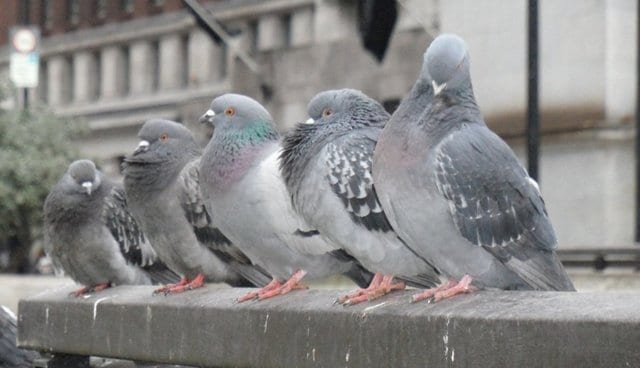
by Pigeon Patrol | Mar 23, 2023 | 4-S Gel Bird repellent, Animal Deterrent Products, Bird Deterrent Products, Bird Law, Bird Netting, Bird Spikes
If you’re heading to catch a bus at the Osborne station rapid transit stop, you might want to watch where you step.

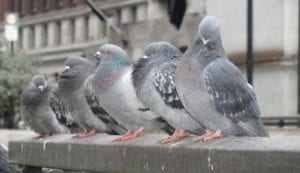
Everywhere you look, every surface is covered in pigeon poop.
“It’s terrible,” said one bus rider. The man also told Global News, it’s been an ongoing issue he’s noticed for months. He said in September, the issue was worse.
Transit riders contacted Global News about the state of the station and health concerns.
“They need some time to clean it up. You can see it all over windows. Someone needs to take a mop to this place,” the rider said.
Pigeon poop can be hazardous to humans, and the build-up of pigeon feces on buildings and other structures is not only visually unappealing and but pigeon droppings are acidic and erode metal and stonework, according to Health Canada.
Pigeons have been associated with a variety of diseases, including histoplasmosis and cryptococcosis.
Histoplasmosis is a disease caused by a fungus that grows in pigeon droppings. The fungus can also be found in bat droppings or in the soil, and is carried by the wind. When removing droppings, people may breathe in some of the fungus. When exposure is high, the fungus can cause infection.
Cryptococcosis is another fungal disease related to pigeon droppings and grows in soils throughout the world. It is very unlikely that healthy people will become infected even at high levels of exposure. A major risk factor for infection is a compromised immune system.
The union representing transit workers also said it would be looking into the situation.
“We want to thank transit riders for bringing these concerns forward, which we certainly take seriously,” Everett Rudolph, Executive Vice President for the ATU said in an email statement.
The City of Winnipeg said the station is cleaned twice a week.
“Orkin Canada was contracted by Winnipeg Transit in the beginning of November to assess and provide recommendations based on industry best practices,” said a city spokesperson.
“They immediately performed an evaluation of the site, and recommended installing feeder units in the vicinity of Osborne Station containing ‘OvoControl P’ which controls the reproduction of pigeons.”
Two feeder units installed in late November are being filled with bait daily, said the city.
“The program will run for a trial period of six months, during which time we will evaluate the effectiveness of the program.”
Source
Pigeon Patrol Products & Services is the leading manufacturer and distributor or bird deterrent (control) products in Canada. Pigeon Patrol products have solved pest bird problems in industrial, commercial, and residential settings since 2000, by using safe and humane bird
deterrents with only bird and animal friendly solutions. At Pigeon Patrol, we manufacture and offer a variety of bird deterrents, ranging from Ultra-flex Bird Spikes with UV protection, Bird Netting, 4-S Bird Gel and the best Ultrasonic and audible sound devices on the market today.
Voted Best Canadian wholesaler for Bird Deterrent products ten years in a row.
Contact us at 1 877-4-NO-BIRD,(604) 585-9279 or visit our website at www.pigeonpatrol.ca
Pigeon/Pigeon Patrol / Pigeons Roosing / Vancouver Pigeon Control / Bird Spikes / Bird Control / Bird Deterrent / PIgeon Deterrent / Surrey Pigeon Control / Pest / Seagull deterrent / Vancouver Pigeon Blog / Birds Inside Home / Pigeons in the cities / Ice Pigeons / What to do about pigeons / sparrows, Damage by Sparrows, How to Keep Raccoons Away, Why Are Raccoons Considered Pests / De-fence / Pigeon Nesting / Bird Droppings / Pigeon Dropping / woodpecker control / Professional Bird Control Company / Keep The Birds Away / Birds/rats/seagull/pigeon/woodpecker/dove/sparrow/pidgeon control/pidgeon problem/pidgeon control/flying rats/pigeon problems/ bird netting/bird gel/bird spray/bird nails/bird guard
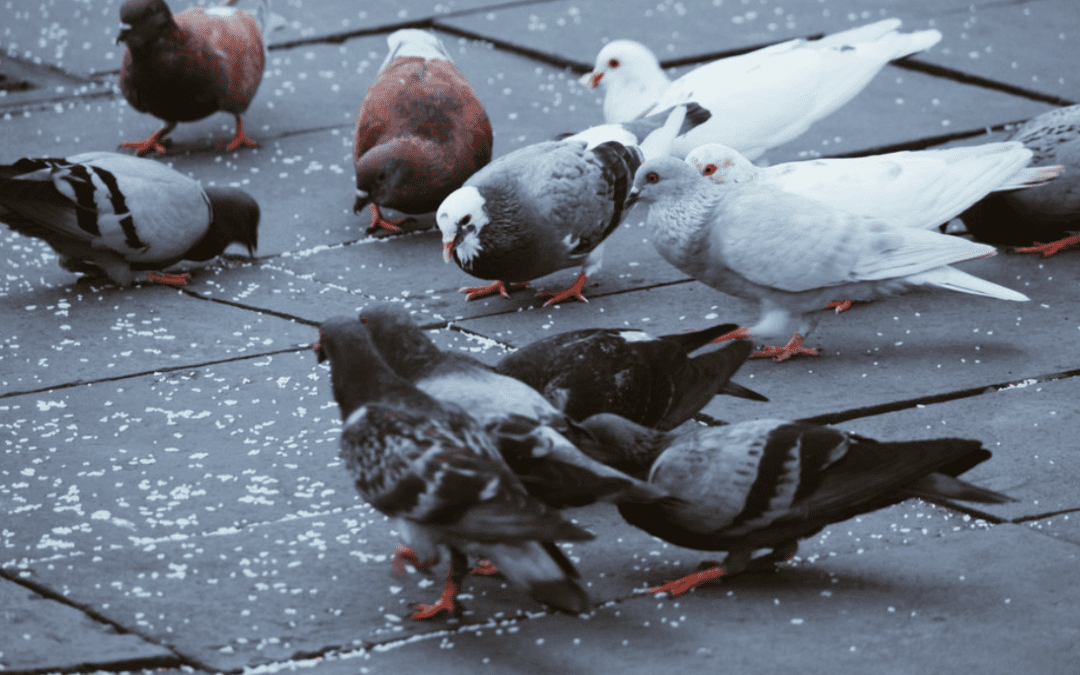
by Pigeon Patrol | Mar 16, 2023 | Bird Spike, Pigeon Predators, Pigeon Spikes, Pigeons, Pigeons in the News, Raccoons, Sparrows, UltraSonic Bird Control
Heading to his usual Sunday morning yoga class in Leslieville a few years ago, my husband, Peter, gave silent thanks when he found a sent-from-above parking spot right in front of the studio. He quickly eased his black Honda Fit, Jellybean, into the space and dashed to his class.
When Peter came out an hour and a half later, his car was so coated in poop he barely recognized it. “It looked like a bunch of elephants with wings had flown over my car and relieved themselves,” he said.
There were no pachyderms to be seen. Pigeons? Yes. Right above Jellybean a couple of hydro wires sagged under the weight of dozens of the city birds. There was only one thing to do. Peter drove straight to the old-timey car wash at Parliament and Front and paid the price to have the carapace of excrement removed. Twice.
Then there was the time our son’s girlfriend, Lisa, got pooped on at the bus stop at Lower Gerrard and Coxwell as she waited for her northbound bus to the subway. This stop is notorious for its pigeon problem and Lisa knew to be vigilant. But on this particular day she was running late for work, on her phone and not paying attention to the birds lined up like so many grey bombers in formation above her. When the bomb-bay doors opened, the blast hit her freshly washed hair. Thinking quickly, she dashed into one of the restaurants in Little India, washed the mess out and continued on her way.
Just another day trying to coexist peacefully with pigeons, the birds first dubbed “rats with wings” by New York City parks commissioner Thomas Hoving in 1966.
I didn’t think too much more about my family members’ run-ins with the tubby birds known officially as rock pigeons and formerly as rock doves. But a few weeks ago, our daughter, Em, mentioned that a family of pigeons had been hanging out on the peaked roof outside her bedroom window. That got my attention. In the more than 20 years we’ve lived here, none of us had ever seen a pigeon on any part of our roof.
Then a couple of nights ago, when I had my bedroom window open to allow the sweet-smelling evening breezes in, I heard faint noises that sounded like the scritch-scratch of bubble-gum pink feet moving about in our eavestroughs.
The next day, I decided to see if I could get a look at the pigeons. It turns out I didn’t need special clearance from MI6 to spy on them through Em’s window. Far from flying off in a furious flap of wings as I neared the glass, they were thoroughly unperturbed by my approach.
There were three pigeons, all about the same size. A close look revealed two were fledglings and the third was an adult. The youngsters skittered up and down our grey roof tiles, pursuing their parent for food. Once they made contact, they pushed their beaks into their parent’s bill, as if to say, “Come on! We know you’ve got our crop milk in there.” But the adult was having none of it; its parental contract for food delivery had already ended.
Until I started reading about the birds on our roof, I had taken the common pigeon, Columba livia, for granted. I thought of them as birds that had always been here, part of the everyday fabric of city life.
While it’s true rock pigeons have been associated with humans for many thousands of years, they haven’t always been in North America. They didn’t reach this continent until the early 1600s. Prior to this, rock pigeons were natural residents of Eurasia and North Africa, where their wild nests could be found in narrow crevices plentiful in sea cliffs, caves and canyons.
The latter fact explains why these birds have fared so well in both the New and Old Worlds. Wherever humans have created towns and cities, places with man-made structures that emulate cliffs, rock pigeons have found a home.
Beyond being evolutionarily successful, rock pigeons are beautiful birds with a regal carriage. Sure, they poop a lot. And it can be hazardous to park or walk under a flock of these birds on a wire. Step carefully, I say, and admire their shimmering, iridescent plumage.
And what of the birds on our roof? When I looked out Em’s window this morning, only the adult pigeon was there; the fledglings, rebuffed, had finally departed. A single small white feather remained on the tiles, a reminder of the pigeon family that was.
Source
Pigeon Patrol Products & Services is the leading manufacturer and distributor or bird deterrent (control) products in Canada. Pigeon Patrol products have solved pest bird problems in industrial, commercial, and residential settings since 2000, by using safe and humane bird
deterrents with only bird and animal friendly solutions. At Pigeon Patrol, we manufacture and offer a variety of bird deterrents, ranging from Ultra-flex Bird Spikes with UV protection, Bird Netting, 4-S Bird Gel and the best Ultrasonic and audible sound devices on the market today.
Voted Best Canadian wholesaler for Bird Deterrent products ten years in a row.
Contact us at 1 877-4-NO-BIRD,(604) 585-9279 or visit our website at www.pigeonpatrol.ca
Pigeon/Pigeon Patrol / Pigeons Roosing / Vancouver Pigeon Control / Bird Spikes / Bird Control / Bird Deterrent / PIgeon Deterrent / Surrey Pigeon Control / Pest / Seagull deterrent / Vancouver Pigeon Blog / Birds Inside Home / Pigeons in the cities / Ice Pigeons / What to do about pigeons / sparrows, Damage by Sparrows, How to Keep Raccoons Away, Why Are Raccoons Considered Pests / De-fence / Pigeon Nesting / Bird Droppings / Pigeon Dropping / woodpecker control / Professional Bird Control Company / Keep The Birds Away / Birds/rats/seagull/pigeon/woodpecker/dove/sparrow/pidgeon control/pidgeon problem/pidgeon control/flying rats/pigeon problems/ bird netting/bird gel/bird spray/bird nails/bird guard

